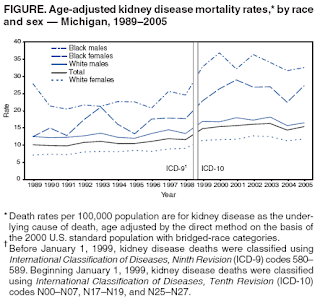WINSTON-SALEM, N.C. – Predictors of atrial fibrillation (AF or afib) might offer physicians a better way to prevent stroke in blacks, according to a new study done by researchers at Wake Forest University School of Medicine.
AF is an irregular and often rapid heart rate that commonly causes poor blood flow to the body, as well as symptoms of heart palpitations, shortness of breath and weakness. Despite low reported prevalence of AF – one of the major risk factors for stroke – in black patients, they suffer strokes five times more often than white patients and die from them two times more often.
That paradox might result from limitations in the methods (electrocardiograms (ECG) or self-report) used to detect AF, said Elsayed Z. Soliman, M.D., M.Sc. M.S., associate director of the Epidemiological Cardiology Research Center (EPICARE) at the School of Medicine and lead author of the study.

Elsayed Z. Soliman, M.D., M.Sc. M.S., associate director of the Epidemiological Cardiology Research Center (EPICARE) at the School of Medicine and lead author of the study. | "The limitations stem from the fact that AF is intermittent in at least 30 percent of patients, and most patients are not aware if they have AF or not," Soliman said. "Trying to detect AF using an ECG, or simply counting on patients to know if they have it, leads to under-diagnosis of the condition most of the time. Our research suggests that being proactive in predicting it may be a better approach."
The study appears in the current issue of Stroke, the peer-reviewed journal of the American Heart Association and American Stroke Association.
An electrocardiogram is a diagnostic tool that measures and records the electrical activity of the heart. Interpretation of an ECG report allows diagnosis of a wide range of heart conditions from minor to life threatening. |
Doctors use ECGs to diagnose AF, and therefore assess the risk of stroke in different patients. However, ECG reports of AF have not been as useful for identifying black patients at high risk. While black patients suffer more ischemic strokes than white patients, their ECG results do not indicate AF as often.
For the study, researchers reviewed ECG data from the Atherosclerosis Risk in Communities (ARIC) study supported by the National Heart, Lung and Blood Institute. More than 15,000 people in North Carolina, Mississippi, Minnesota and Maryland participated in the study during the 1980s and 90s.
Researchers found that, while ECG reports of AF were significantly less in black participants than in whites, black participants ultimately suffered more ischemic strokes. However, the analysis uncovered that ECGs on black participants revealed a higher rate of predictors of future AF than did the ECGs of the white participants. These ECG predictors of AF (P-wave terminal force, P-wave duration, P-wave area and PR duration) represent electrical activity within the upper two chambers of heart, or atria, which are the sources of blood clots that cause stroke if AF occurs. These ECG predictors of AF were strongly predictive of strokes and AF in blacks and whites, so researchers believe their existence could be considered as presence – or future presence – of AF.
"With the blacks having more abnormal ECG predictors of AF, as the results showed, there is a possibility that blacks might actually have a higher prevalence of AF than previous studies have picked up on," Soliman said. "Blacks may have more "intermittent" AF, the difficult type of AF to detect, which could be the reason why previous studies underestimated AF diagnosis more in blacks."
Soliman added that physicians, knowing this, should use the ECG to evaluate black patients' risk of stroke by determining if the patient has certain predictors of AF, instead of the condition itself. If so, the patients may be able to be treated with blood thinners as if they have AF. It is a treatment adjustment that could help prevent stroke, however further investigation into the subject is needed, he said.
"P-wave terminal force in the ECG may provide a strong independent predictor for incidence stroke and AF in clinical practice," Soliman said.
"For the physician evaluating black patients for the risk of stroke, these results show that you cannot think AF is less common in this population," Soliman said.
Soliman said that the next step in research on this subject is to do a long-term ECG study to confirm the hypothesis that AF, especially intermittent AF, has been under-diagnosed in blacks.
"We need further studies using long-term ECG recording – 48 hours to 72 hours – or event monitors to detect AF" he said. "The cost of these tests on population studies has always been an obstacle. However, with the results of this study, it may be worth it." ###
Co-authors on the study are Ronald J. Prineas, M.D., Ph.D., L. Douglas Case, Ph.D., Zhu-ming Zhang, M.D. and David C. Goff Jr., M.D., Ph.D., all of the Division of Public Health Sciences at the Wake Forest University School of Medicine.
Media Relations Contacts: Jessica Guenzel,
jguenzel@wfubmc.edu, (336) 716-3487; Bonnie Davis,
bdavis@wfubmc.edu, (336) 716-4977; or Shannon Koontz,
shkoontz@wfubmc.edu, (336) 716-4587
Wake Forest University Baptist Medical Center (
www.wfubmc.edu) is an academic health system comprised of North Carolina Baptist Hospital, Brenner Children's Hospital, Wake Forest University Physicians, and Wake Forest University Health Sciences, which operates the university's School of Medicine and Piedmont Triad Research Park.
The system comprises 1,056 acute care, rehabilitation and long-term care beds and has been ranked as one of "America's Best Hospitals" by
U.S. News & World Report since 1993. Wake Forest Baptist is ranked 32nd in the nation by America's Top Doctors for the number of its doctors considered best by their peers. The institution ranks in the top third in funding by the National Institutes of Health and fourth in the Southeast in revenues from its licensed intellectual property.
Contact: Jessica Guenzel
jguenzel@wfubmc.edu 336-716-3487
Wake Forest University Baptist Medical Center


































